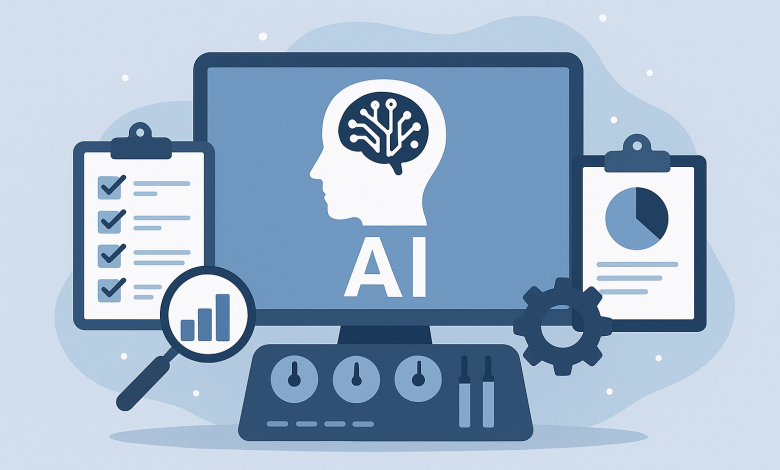
When Microsoft Copilot first arrived on the scene, the number one request I received from customers was, “How do I turn this off?” The concern stemmed from the overwhelming amount of security issues that were uncovered by enabling Copilot. AI is a powerful tool, but its output is only as good as its input. And sadly, bad input doesn’t “just” lead to inaccuracy, it can expose a wealth of sensitive data to the world and that could be a huge problem for your organization.
When it comes to organizations implementing AI, my biggest piece of advice is truly simple: make sure you’re fully ready. Set yourself up for success before diving into the deep end, otherwise, you risk creating an endless amount of security risks instead of realizing AI’s full potential.
Data Practice and Security: The Backbone of AI Readiness
Right from the start, you need a clear understanding of where all your data lives to direct AI toward the right sources. Just as important, permissions must be configured so that restricted data stays protected while the right users maintain the access they need. Think of it as a balancing act, ensuring availability without compromising security.
Equally critical is user education around data accuracy: understanding what inaccurate data looks like, how to decipher what’s real and not, and how to ask the right questions to avoid flawed answers. In our daily lives, we tend to ask questions expecting a specific answer. With AI, we need to take a different approach – training users to ask questions that lead to right answers, not just the ones we want to hear.
Cost Control & Procurement Issues: Keeping Your Cloud Costs in Check
Cost control and procurement issues have never gone away, they’ve just evolved in cycles over the past couple of decades. Twenty years ago, the biggest concern was virtualization. While revolutionary, it also led to massive VM sprawl. At the push of a button, a new expense was quietly added to the network.
Today, that same problem has resurfaced in a new form: subscription based services. With cloud and AI offerings, it only takes one more click to increase an organization’s cost, and often goes unnoticed until the bill arrives.
For example, a customer requested access to Copilot Studio. They were granted access, the customer enabled a SKU, and three days later, there was a $35,000 charge on the account. They had simply selected the “best” SKU without considering the downstream financial impact.
Real life scenarios like this highlight why organizations must establish strong checks, balances, and visibility into their AI and cloud costs. Without proper oversight, the convenience quickly turns into an uncontrolled cost escalation.
User Enablement and Responsible AI Use: Putting Humans in Control
Remember, AI is just a tool, much like the wrench in my toolbox. It’s designed to serve a specific purpose, and because I know exactly how and why I’m using it, I remain fully in control. Just because AI delivers an answer doesn’t mean it’s automatically correct. AI should assist human judgement, not replace it.
Human effort and oversight remain critical. Overreliance on AI can lead to inaccuracies, biases, and ethical risks. That’s why user enablement should stay top of mind. Train teams not only to understand the immense capabilities of AI but also its limitations, and to apply it responsibly within the right context. When humans stay in the driver’s seat, AI performs at its peak.
AI Readiness: Preparing People, Processes, and Policies for Success
No matter what AI you plan on implementing, whether it’s ChatGPT, Copilot, Azure AI, or any other platform, the same security and compliance requirements must be in place across the board.
The moment a user logs in through a personal account, organizational control is lost. Data can easily leave the environment and fall into the wrong hands. Ensuring that every user accesses AI tools through an authorized organizational account is critical to preventing a chain reaction of security vulnerabilities.
Another key consideration is identifying the right users for the pilot. It’s more than just selecting a group of like-minded people to pilot the technology. Diversity matters, and a mix of users from different departments often provides the most comprehensive perspective. These are the individuals who can champion adoption internally and offer honest, constructive feedback. Striking the right balance of job function and mindset is essential to getting valuable, accurate outcomes from AI. For instance, someone who spends their day heads-down in spreadsheets with no interest in changing how they work, may not be the ideal user to pilot a tool like Copilot.
You also can’t rush AI adoption. Jumping straight from implementation to organization-wide rollout is a recipe for disaster. Determine how you’ll use the information generated, how you’ll interpret feedback and findings, and what steps you’ll take next. AI readiness isn’t about just enabling a tool – it’s about preparing your people, processes, and policies to use it responsibly and effectively.
The Path Forward
We’ve entered a new phase of enterprise IT, one where innovation moves faster than ever, and organizations struggle to keep up with the latest features. Microsoft’s pricing shifts, paired with the rapid evolution of AI and cloud tools, are forcing companies to rethink how they manage budgets, data, and people.
AI has the power to transform the enterprise. But that transformation doesn’t happen by accident. It starts with a solid foundation, built on security, cost awareness, user enablement, and a readiness to adapt.
In this new era of enterprise IT, success doesn’t come from simply adopting the latest technology. It comes from understanding how to use it responsibly, strategically, and with people at the center of every decision. That’s how AI becomes not just a tool, but a competitive advantage.




